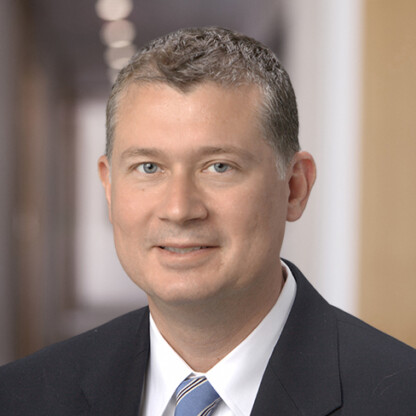Foley proudly sponsored the The Summit on Intellectual Property for Wireless Technology in San Diego, CA on June 20-21. Only a few years ago, there weren’t many people who foresaw that someday a cell phone would also function as an e-mail device, music and video player, camera and storage device. With the continued expansion of wireless technology and advances in LAN applications such as Bluetooth, there are virtually no limits to the profits that can be made in IP licensing … but as always, the devil is in the details.
Program Highlights:
- Clear intellectual property before practicing a standard
- Determine and declare essential patents
- Assign “reasonable and non-discriminatory” licensing fees when joining the standards body
- Maximize due diligence when evaluating portfolios for acquisition
- Optimize your outside counsel’s role in patent validity and infringement issues
- Overcome intellectual property issues surrounding next generation technologies and 3P migration
- Navigate the roadblocks and understand the tolls to be paid when entering the wireless IP market
- Lock in maximum financing from venture capitalists and corporate partners
- Launch licensing programs that incorporate your IP into next-generation mobile and consumer devices
- Develop methodologies that quickly and accurately track and associate concepts, technologies, standards, products, and licenses
- Avoid antitrust issues raised by licensing and pooling strategies
- Understand the industry-wide impact of the recent awards for patent infringement
Where was Foley:
Wednesday, June 20, 2007 9:15 a.m.When Third Parties Want a Piece of the Wireless Technology Business: Assessing and Responding to Patent Claims
The wireless industry is patent-savvy and aggressive. Companies in this industry are relentless with IP value extraction at the expense of their competitors. A sophisticated approach to managing the defense of these patent claims is crucial to keep a company from being overwhelmed with business disruptions, legal fees and royalty costs. Patent claims can come from trolls or small companies, competitors, or the licensing arms of the biggest patent holders, and your defense strategy will be different for each type of aggressor. This session focused on:
- Being prepared: Techniques to be ready for the day when the “invitation to license” letter arrives
- Managing expectations: Counseling management on the risks
- Process: From assembling the right team to deciding when to involve outside counsel
- Deciding whether, when and how to have a formal opinion
- Responding: Playing trump without showing your cards
Presenters:
- Steven C. Becker, Partner, Foley & Lardner LLP
- William Growney, General Counsel, IMEEM
- Mathew P. Harper, IPR Legal Counsel, Nokia, Inc.
Wednesday, June 20, 2007, 1:15 p.m.
Clearing New Products and Enhancements to Minimize Risk of Infringement Liability
The potential liability arising from patent infringement claims is widely understood at all levels of companies in the wireless industry: even “innocent” infringement may lead to loss of profits, the threat of an injunction, and massive legal costs. In view of this risk, businesses in many other industries routinely conduct patent clearance studies as an integral part of the product development process.
However, the vast number of communications, software, and business method patents often renders it impractical to develop a cost-effective and reliable patent clearance process in the wireless industry. Further, the clearance process threatens to provide a basis for a future charge of willfulness based on prior knowledge of a patent. This session will examine the costs, benefits and legal risks associated with conducting patent clearance studies. The presentation will offer options for establishing more limited studies to identify and minimize risk of liability. Specific issues discussed included:
- What obligations are imposed under existing laws for assessing potential patent infringement claims?
- Is the risk of a willfulness charge so great that no study should be conducted?
- How can a company attempt to clear products over known patents in the wireless space, including patents on standard compliant products?
- Would patent reform proposals and potential changes in the law of willfulness effectively eliminate disincentives that discourage businesses from conducting patent clearance searches?
Presenters:
- George C. Beck, Partner, Foley & Lardner LLP
Thursday, June 21, 2007, 8:15 a.m.
Chairperson’s Recap of Day One
Foley Partner G. Peter Albert, Jr . was the Conference Chairperson and recapped the events of day one.
Post-Conference Workshop
Thursday, June 21, 2007, 12:30 p.m. – 3:00 p.m.
Technology Transfer — Innovation to Commercialization
America’s research universities as well as private and government-funded research facilities have long been a source of world-class theoretical research and innovation. Recent breakthroughs and advances in wireless technologies drive investment, collaboration and technology transfer, resulting in the rapid development of commercial applications. The technologies, concepts and ideas emerging from research laboratories have found their way into scores of industrial, consumer, and high-tech products.
Increasingly, venture capital and private equity investment are funding technology-based growth enterprises, and the industry is outsourcing technology development, forming technology based collaborations, and funding theoretical research. As an example, the increasing amounts of industry funding for sponsored research at universities demonstrates the recognition of an effective technology transfer channel for moving theoretical research to commercial application, including wireless technologies. Of course, technology transfer and research collaboration is not without transaction costs, measured both in dollars and time spent negotiating agreements.
This workshop will explore the viewpoints of the industry, research institutions, and the academy, on industry-university and industry-to-industry research collaboration, barriers to effective negotiations, and suggestions on how to improve the situation for both sides and facilitate effective technology transfer.
Specifically, attendees learned how to:
- Streamline your negotiations and reduce transaction costs by understanding the legal and “cultural” landscape
- Anticipate and identify roadblocks quickly and overcome them through effective communication
- Structure a mutually beneficial relationship to result in effective collaborations without trying your patience
Workshop Leader:
Adrian R. Cyhan, Senior Counsel and a member of the firm’s Electronics Practice and Automotive Industry Team, Foley & Lardner LLP

